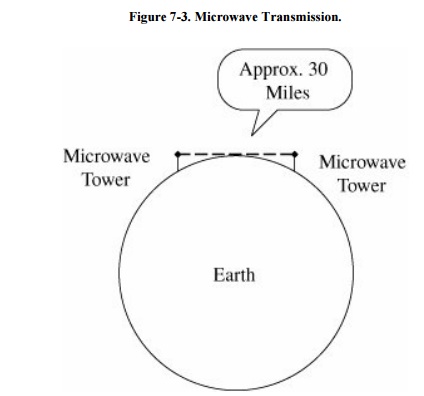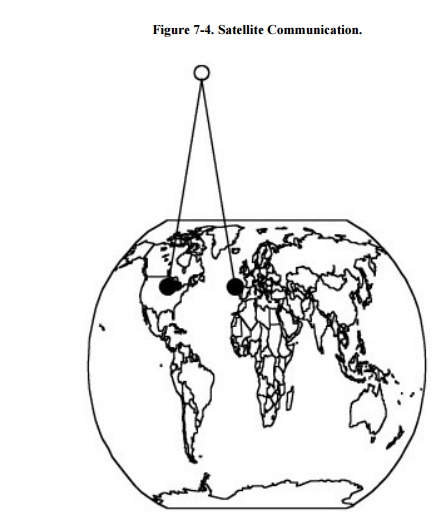Chapter: Security in Computing : Security in Networks
Network Media
Media
Communication is enabled by
several kinds of media. We can choose among several types, such as along copper
wires or optical fiber or through the air, as with cellular phones. Let us look
at each type in turn.
Cable
Because much of our computer communication has
historically been done over telephone lines, the most common network
communication medium today is wire. Inside our homes and offices, we use a pair
of insulated copper wires, called a twisted
pair or unshielded twisted pair (UTP). Copper has good
transmission properties at a relatively low cost. The bandwidth of UTP is
limited to under 10 megabits per second (Mbps), so engineers cannot transmit a large number of
communications simultaneously on a single line. Moreover, the signal strength
degrades as it travels through the copper wire, and it cannot travel long
distances without a boost. Thus, for many networks, line lengths are limited to
approximately 300 feet. Single twisted pair service is most often used locally,
within a building or up to a local communications drop (that is, the point
where the home or office service is connected to the larger network, such as
the commercial telephone system). Although regular copper wire can transmit
signals, the twisting reduces crossover (interference and signal transfer)
between adjacent wires.
Another choice for network communication is coaxial (coax) cable, the kind used for
cable television. Coax cable is constructed with a single wire surrounded by an
insulation jacket. The jacket is itself surrounded by a braided or spiral-wound
wire. The inner wire carries the signal, and the outer braid acts as a ground.
The most widely used computer communication coax cable is Ethernet, carrying up to 100 Mbps over distances of up to 1500
feet.
Coax cable also suffers from degradation of
signal quality over distance. Repeaters
(for digital signals) or amplifiers
(for analog signals) can be spaced periodically along the cable to pick up the
signal, amplify it, remove spurious signals called "noise," and
retransmit it.
Optical Fiber
A newer form of cable is made
of very thin strands of glass. Instead of carrying electrical energy, these
fibers carry pulses of light. The bandwidth of optical fiber is up to 1000
Mbps, and the signal degrades less over fiber than over wire or coax; the fiber
is good for a run of approximately 2.5 miles. Optical fiber involves less
interference, less crossover between adjacent media, lower cost, and less
weight than copper. Thus, optical fiber is generally a much better transmission
medium than copper. Consequently, as copper ages, it is being replaced by
optical fiber in most communication systems. In particular, most long distance
communication lines are now fiber.
Wireless
Radio signals can also carry communications.
Similar to pagers, wireless microphones, garage door openers, and portable
telephones, wireless radio can be used in networks, following a protocol
developed for short-range telecommunications, designated the 802.11 family of
standards. The wireless medium is used for short distances; it is especially
useful for networks in which the nodes are physically close together, such as
in an office building or at home. Many 802.11 devices are becoming available
for home and office wireless networks.
Microwave
Microwave is a form of radio
transmission especially well suited for outdoor communication. Microwave has a
channel capacity similar to coax cable; that is, it carries similar amounts of
data. Its principal advantage is that the signal is strong from point of
transmission to point of receipt. Therefore, microwave signals do not need to
be regenerated with repeaters, as do signals on cable.
However, a microwave signal
travels in a straight line, presenting a problem because the earth curves. Microwave
signals travel by line of sight: The transmitter and receiver must be in a
straight line with one another, with no intervening obstacles, such as
mountains. As shown in Figure 7 -3, a
straight microwave signal transmitted between towers of reasonable height can
travel a distance of only about 30 miles because of the earth's curvature.
Thus, microwave signals are "bounced" from receiver to receiver,
spaced less than 30 miles apart, to cover a longer distance.
Infrared
Infrared communication carries signals for
short distances (up to 9 miles) and also requires a clear line of sight.
Because it does not require cabling, it is convenient for portable objects,
such as laptop computers and connections to peripherals. An infrared signal is
difficult to intercept because it is a point-to-point signal. However, it is
subject to "in the middle" attacks in which the interceptor functions
like a repeater, receiving the signal, extracting any desired data, and
retransmitting to the original destination the original signal or a modified
version. Because of line-of-sight requirements and limited distance, infrared
is typically used in a protected space, such as an office, in which
in-the-middle attacks would be difficult to conceal.

Satellite
Many communications, such as
international telephone calls, must travel around the earth. In the early days
of telephone technology, telephone companies ran huge cables along the ocean's
bottom, enabling calls to travel from one continent to another. Today, we have
other alternatives. The communication companies place satellites in orbits that
are synchronized with the rotation of the earth (called geosynchronous orbits), so the satellite appears to hover in a
fixed position 22,300 miles above the earth. Although the satellite can be expensive to launch, once in space it
is essentially maintenance free. Furthermore, the quality of a satellite
communication link is often better than an earthbound wire cable.
Satellites act as naïve
transponders: Whatever they receive they broadcast out again. Thus, satellites
are really sophisticated receivers, in that their sole function is to receive
and repeat signals. From the user's point of view, the signal essentially
"bounces" off the satellite and back to earth. For example, a signal
from North America travels 22,300 miles into the sky and the same distance back
to a point in Europe. The process of bouncing a signal off a satellite is shown
in Figure 7-4.
We can project a signal to a satellite with
reasonable accuracy, but the satellite is not expected to have the same level
of accuracy when it sends the signal back to earth. To reduce complexity and
eliminate beam focusing, satellites typically spread their transmissions over a
very wide area. A rather narrow angle of dispersion from the satellite's
transmitter produces a fairly broad pattern (called the footprint) on the surface of the earth because of the 22,300-mile
distance from the satellite to earth. Thus, a typical satellite transmission
can be received over a path several hundred miles wide; some cover the width of
the entire continental United States in a single transmission. For some
applications, such as satellite television, a broad footprint is desirable. But
for secure communications, the smaller the footprint, the less the risk of
interception.

Related Topics